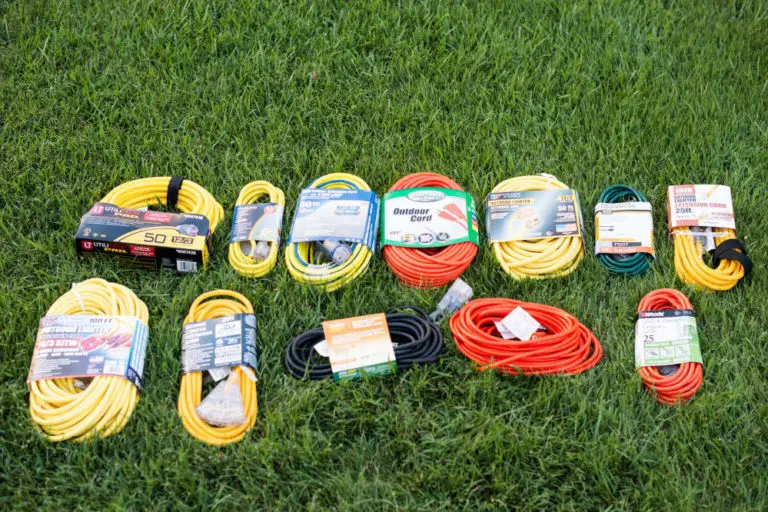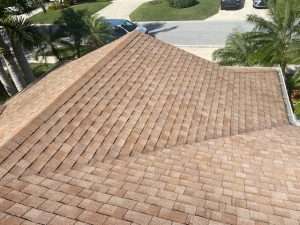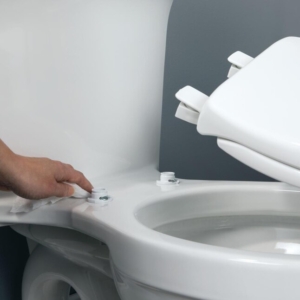The Ultimate Guide to Choosing and Using Outdoor Extension Cords
One tool is a must-have when it comes to powering your outdoor tools or setting up your dream patio. That’s right; we’re talking about the outdoor extension cord. This versatile tool is the unsung hero of the backyard, making it easier for you to operate your equipment or set up your outdoor lighting. But not all extension cords are made equal. You need to consider factors like length, durability, and safety features. In this blog post, we’ll guide you through everything you need to know to select the best outdoor extension cord. So, let’s dive right in and shed some light on this essential tool.
What is an Outdoor Extension Cord?
An outdoor extension cord is a versatile and essential electrical accessory that allows you to power your electronic devices, tools, and appliances outdoors, even when they are located far away from a power outlet. Whether you’re working on a DIY project in your backyard, hosting an outdoor event, or simply enjoying some time outside, an outdoor extension cord provides the convenience and flexibility you need to stay connected.
Benefits of Using an Outdoor Extension Cord
Using an outdoor extension cord offers a multitude of benefits, making it an indispensable tool for various situations. Here are some advantages that highlight the importance of having an outdoor extension cord:
- Extended Reach: An outdoor extension cord is designed to provide an extended reach for electrical devices, enabling you to power them from a distance. This is particularly useful when working in large outdoor spaces or when the power source is not within easy reach.
- Versatility: Outdoor extension cords come in a range of lengths and gauges, allowing you to choose the right cord for your specific needs. From powering garden tools to setting up outdoor lighting, these cords can handle various electrical demands.
- Durability: Unlike regular indoor extension cords, outdoor extension cords are built to withstand the rigors of outdoor use. They are often weather-resistant, designed to resist damage from moisture, sunlight, and temperature fluctuations, ensuring safe and reliable operation even in harsh conditions.
- Safety: Outdoor extension cords are designed with safety in mind. Many models feature built-in safety features such as grounded plugs, surge protectors, and circuit breakers to protect your devices from power surges and prevent electrical hazards.
Types of Outdoor Extension Cords
When it comes to outdoor extension cords, there are several types available, each designed for specific purposes. Here are some common types of outdoor extension cords:
- General-Purpose Extension Cords: These cords are suitable for a wide range of outdoor tasks and come in various lengths and gauges. They are commonly used for powering tools, lights, and other small to medium-sized electrical devices.
- Heavy-Duty Extension Cords: Heavy-duty extension cords are built to handle more demanding electrical loads. They are ideal for powering high-wattage devices such as power tools, air compressors, and outdoor appliances.
- Flat Extension Cords: Flat extension cords are designed to be inconspicuous and easily concealable. They are often used for temporary outdoor setups, such as holiday lighting or outdoor events, where aesthetics are a consideration.
- Extension Cord Reels: Extension cord reels provide a convenient way to store and manage your outdoor extension cords. They help prevent tangles and make it easy to extend or retract the cord as needed.
Factors to Consider When Choosing an Outdoor Extension Cord
When it comes to outdoor power needs, having a reliable extension cord is essential. However, not all cords are created equal, and choosing the right one requires careful consideration. In this section, we will explore the key factors to keep in mind when selecting an outdoor extension cord: length, gauge, durability, and weatherproofing.
Length
The length of the extension cord is an important factor to consider. It determines how far you can power your devices from the power source. A shorter cord may limit your mobility, while a longer one can lead to power loss due to voltage drop. Therefore, it is crucial to assess your specific outdoor power requirements and choose a cord length that suits your needs.
Gauge
The gauge of an extension cord refers to its thickness and determines the amount of electrical current it can safely carry. The lower the gauge number, the thicker the wire and the higher the capacity. For outdoor use, it is recommended to choose a cord with a lower gauge, such as 12 or 10 gauge, to ensure efficient power transmission and minimize the risk of overheating or damage.
Durability
Outdoor environments can be harsh, so it is important to select a durable extension cord that can withstand the elements. Look for cords made from high-quality materials, such as heavy-duty vinyl or rubber, which offer excellent resistance to abrasion, moisture, and UV rays. Additionally, consider cords with reinforced connectors and strain relief to enhance their longevity and minimize the risk of fraying or breakage.
Weatherproofing
Since outdoor extension cords are exposed to the elements, they need to be weatherproof to ensure safe and reliable operation. Look for cords that are specifically designed for outdoor use and have a weather-resistant rating, such as a “W” or “WR” designation. These cords are typically equipped with features like water-resistant jackets and corrosion-resistant plugs, providing added protection against rain, snow, and other adverse weather conditions.
By considering these factors – length, gauge, durability, and weatherproofing – you can confidently choose an outdoor extension cord that meets your specific power needs while providing reliable and safe operation. Remember, investing in a high-quality cord may cost a bit more upfront, but it will save you from potential hazards and ensure your outdoor power needs are met with utmost efficiency and peace of mind.
Understanding Extension Cord Ratings
Extension cords are a convenient solution for powering our outdoor devices and equipment. However, it’s important to understand the various ratings associated with extension cords to ensure proper usage and prevent potential hazards. In this section, we will explore two crucial ratings: voltage rating and amp rating.
Voltage Rating
The voltage rating of an extension cord refers to the maximum voltage it can safely handle. It is essential to match the cord’s voltage rating with your device’s voltage requirements. Using an extension cord with a lower voltage rating than required can lead to overheating and potential damage. On the other hand, using a higher voltage-rated cord than necessary is generally safe, but it may be unnecessarily bulky and more expensive.
When choosing an extension cord, check the voltage rating specified on both the cord and your devices. Typically, outdoor extension cords have a voltage rating of 120 volts, which is suitable for most residential applications. However, if you have specialized equipment requiring higher voltage, ensure the extension cord can handle it.
Amp Rating
The amp rating of an extension cord and the maximum amount of electrical current it can carry without overheating are equally important. Every device has an amp rating, and it is important to choose an extension cord that can handle the combined amp requirements of all the devices connected to it.
To determine the appropriate amp rating for your extension cord, add up the amp ratings of all the devices you plan to use simultaneously. It is important to note that if you exceed the amp rating of the extension cord, it can overheat and pose a fire hazard.
When selecting an extension cord, you will find the amp rating labeled on the cord itself. Ensure that the amp rating of the cord is equal to or higher than the total amp requirements of your devices. If in doubt, it is always better to choose a higher amp rating to allow for additional devices or future expansion.
Remember to consider the length of the extension cord as well. Longer cords can experience voltage drops, especially when carrying higher amp loads. If you need to use a longer cord, choose one with a larger wire gauge to minimize voltage drop.
Types of Outdoor Extension Cords
When it comes to outdoor electrical projects, having a reliable and safe power source is crucial. That’s where outdoor extension cords come into play. These handy devices allow you to bring power to your yard, garden, or any outdoor area where you need it. This section will explore the different types of outdoor extension cords and their specific uses.
Light-Duty Extension Cords
Light-duty extension cords are perfect for those small-scale outdoor projects that require minimal power. They are typically lightweight and easy to handle, making them ideal for tasks like powering outdoor lights, holiday decorations, or small power tools. These cords are designed for temporary use and are not meant to be left outdoors for extended periods.
When choosing a light-duty extension cord, it’s important to consider the length and gauge. The length should be sufficient to reach your desired outdoor area without excessive stretching. As for the gauge, a lower number indicates a thicker wire, which can handle higher electrical loads. For light-duty tasks, a 16-gauge cord is usually sufficient.
Medium-Duty Extension Cords
Medium-duty extension cords are a step up from their light-duty counterparts. They are designed to handle more demanding outdoor projects that require a bit more power. These cords are suitable for tasks like operating electric lawnmowers, hedge trimmers, or portable power tools.
When selecting a medium-duty extension cord, consider the length, gauge, and the wattage of the devices you plan to connect. A 14-gauge cord is typically recommended for medium-duty applications, as it can handle higher electrical loads. Additionally, ensure that the cord is long enough to reach your desired outdoor area comfortably.
Heavy-Duty Extension Cords
Heavy-duty extension cords are the way to go for heavy-duty outdoor projects requiring a significant amount of power. These cords are built to withstand rugged conditions and are capable of handling high electrical loads. They are commonly used for powering construction equipment, air compressors, or large power tools.
When choosing a heavy-duty extension cord, pay close attention to the length, gauge, and the wattage requirements of your equipment. A 12-gauge cord is typically recommended for heavy-duty applications, as it can handle the highest electrical loads. Additionally, ensure that the cord is long enough to reach your outdoor work area without any limitations.
In conclusion, understanding the different types of outdoor extension cords is essential for ensuring a safe and efficient power supply during your outdoor projects. Whether you need a light-duty, medium-duty, or heavy-duty cord, there is a suitable option available to meet your specific needs. Make sure to choose the right cord for the task at hand and always prioritize safety when working with electricity outdoors.
Tips for Using Outdoor Extension Cords Safely
Using outdoor extension cords safely is crucial to prevent accidents and ensure the longevity of your electrical equipment. In this section, we will discuss three essential tips to help you use outdoor extension cords safely: Proper Storage and Maintenance, Avoid Overloading the Extension Cord, and Protecting the Cord from Damage.
Proper Storage and Maintenance
Properly storing and maintaining your outdoor extension cords is the first step to ensuring their safety and longevity. Here are some tips to keep in mind:
- Coiling and Uncoiling: Always coil and uncoil your extension cords properly to avoid kinks and tangles. Kinks can cause damage to the cord, leading to potential hazards. When coiling, make sure to use the over-under technique, which prevents twists and makes it easier to unwind later.
- Dry Storage: It is essential to store your outdoor extension cords in a dry location when not in use. Moisture can damage the cord’s insulation and increase the risk of electrical shocks or short circuits. Consider using a weatherproof storage container or a dedicated cord reel to protect them from the elements.
- Regular Inspections: Regularly inspect your extension cords for any signs of wear and tear. Look for frayed or damaged insulation, exposed wires, or broken plugs. If you notice any damage, it is best to replace the cord immediately to avoid potential electrical hazards.
Avoid Overloading the Extension Cord
Overloading an extension cord can lead to overheating, electrical fires, or even damage to your electrical devices. To prevent such risks, follow these guidelines:
- Check the Cord’s Capacity: Before plugging in multiple devices, make sure to check the extension cord’s capacity. Each cord has a maximum power rating indicated on its label or packaging. Avoid exceeding this capacity to prevent overloading.
- Use Power Strips Wisely: If you need to power several devices simultaneously, consider using a power strip with built-in surge protection. However, remember that the power strip also has a maximum capacity, so avoid exceeding it. Distribute the load evenly across multiple outlets or use additional extension cords if necessary.
- Unplug Unused Devices: When you’re not using a device, unplug it from the extension cord. This practice not only reduces the load on the cord but also saves energy. Leaving unused devices plugged in can still draw power and increase the risk of overloading.
Protecting the Cord from Damage
Taking precautions to protect your outdoor extension cords from damage is crucial for their safety and functionality. Here are some tips to help you safeguard your cords:
- Keep Cords Elevated: Avoid laying your extension cords on the ground where they can get damaged by foot traffic, lawn mowers, or other outdoor equipment. Instead, elevate them using hooks, stakes, or specially designed cord protectors. This prevents accidental tripping hazards and potential damage.
- Avoid Pinching or Crushing: Do not run your extension cords through doorways or windows where they can get pinched or crushed. Pinching can cut through the insulation, exposing the wires and creating a hazardous situation. Use cord covers or rubber grommets to protect the cords when passing through openings.
- Protect from Extreme Weather: Extreme weather conditions, such as heavy rain or excessive heat, can damage outdoor extension cords. Whenever possible, use weatherproof extension cords that are designed to withstand the elements. If you need to use a regular extension cord outdoors, ensure it is rated for outdoor use and keep it away from direct contact with water or excessive heat sources.
Common Mistakes to Avoid When Using Outdoor Extension Cords
When it comes to using outdoor extension cords, it’s essential to be aware of common mistakes that can lead to safety hazards and potentially damage your equipment. By avoiding these errors, you can ensure the longevity of your cords and maintain a safe environment. In this section, we will discuss three common mistakes to avoid when using outdoor extension cords: using indoor extension cords outdoors, connecting multiple cords together, and ignoring warning signs of damage.
Using Indoor Extension Cords Outdoors
One of the most critical mistakes people make is using indoor extension cords outdoors. Indoor extension cords are not designed to withstand the harsh conditions that outdoor environments present. Exposure to moisture, extreme temperatures, and UV rays can cause the insulation to deteriorate, increasing the risk of electrical shock or fire.
To avoid this mistake, it is crucial to use outdoor extension cords specifically designed for outdoor use. These cords are constructed with weather-resistant materials and have additional features such as grounded plugs and water-resistant covers. Using indoor extension cords outdoors not only puts you at risk but also voids any warranties and certifications.
Connecting Multiple Cords Together
Another common mistake when using outdoor extension cords is connecting multiple cords together. While it may seem like a convenient solution for reaching longer distances, connecting multiple cords can lead to voltage drops and overheating. These issues can damage your devices and increase the risk of electrical hazards.
To prevent this mistake, opt for an extension cord with the appropriate length for your needs. If you find that you often require longer cords, consider investing in a single, longer outdoor extension cord instead of connecting multiple shorter ones. This will ensure a safer and more efficient power supply.
Ignoring Warning Signs of Damage
Ignoring warning signs of damage is another common mistake that people make when using outdoor extension cords. Over time, cords can become frayed, cracked, or damaged due to frequent use or exposure to the elements. Ignoring these warning signs can lead to electrical malfunctions, shocks, or even fires.
To avoid this mistake, regularly inspect your outdoor extension cords for any visible signs of damage. Look for frayed or exposed wires, cracked insulation, or loose connections. If you notice any issues, immediately replace the cord or repair it using appropriate methods or seek professional help. Regular maintenance and inspections will help ensure the safety and reliability of your cords.
By avoiding these common mistakes, you can use outdoor extension cords safely and effectively. Remember to always use outdoor extension cords for outdoor applications, avoid connecting multiple cords together, and promptly address any signs of damage. Taking these precautions will not only protect your equipment but also safeguard you and others from potential electrical hazards. Stay safe and enjoy the convenience that outdoor extension cords provide!
How to Properly Store Outdoor Extension Cords
When it comes to outdoor extension cords, proper storage is essential for their longevity and safety. Coiling and labeling your cords, as well as storing them in a dry and safe location, are key steps to ensure they remain in good condition and ready for use when needed. In this section, we will explore these important aspects of storing outdoor extension cords.
Coiling and Labeling
Coiling and labeling your outdoor extension cords may seem like a simple task, but it can make a significant difference in their lifespan and usability. Here’s how to do it properly:
- Coiling: Start by untangling the cord and laying it out straight. Then, hold one end of the cord and begin to coil it in a circular motion. Make sure to avoid twisting or kinking the cord while coiling. By creating neat and even loops, you prevent unnecessary stress on the cord and reduce the risk of tangles.
- Labeling: Once your cord is neatly coiled, it’s a good idea to label it for easy identification in the future. You can use colored tape or labels to mark the cord’s length, gauge, or any other relevant information. Additionally, labeling cords with specific purposes, such as “Christmas lights” or “yard tools,” can help you quickly find the right cord for your needs.
Storing in a Dry and Safe Location
After coiling and labeling your outdoor extension cords, it’s crucial to store them in a dry and safe location. Here’s why it matters and how to do it effectively:
- Dryness: Moisture can be detrimental to the functionality and safety of outdoor extension cords. Exposing them to water or high humidity levels can lead to corrosion, electrical shorts, and even pose a risk of electric shock. To avoid these issues, store your cords in a dry environment, such as a garage, shed, or a designated storage box.
- Safe Location: In addition to keeping your cords dry, storing them in a safe location is equally important. Choose an area where they won’t be at risk of getting crushed, stepped on, or damaged by other objects. Hanging them on hooks or using cord reels can help keep them off the ground and away from potential hazards.
Conclusion
In conclusion, an outdoor extension cord is an essential tool for any outdoor electrical needs. It provides a safe and convenient way to extend the reach of power sources, making it possible to power outdoor lights, tools, and appliances. When choosing an outdoor extension cord, it is important to consider factors such as length, gauge, and durability. Opting for a cord with a higher gauge will ensure efficient power delivery over longer distances, while a durable outer casing will protect against weather and wear. Regular maintenance and proper usage are also crucial to ensure the longevity and safety of the outdoor extension cord. By following these guidelines, you can make the most of your outdoor electrical projects while keeping safety a top priority.








